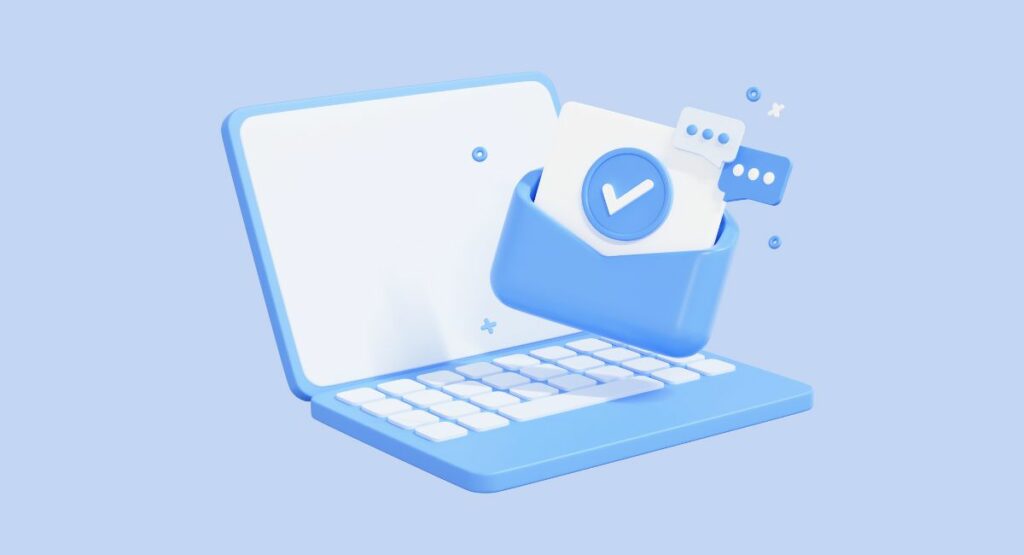Email Marketing
In today’s competitive banking environment, effective email marketing is more than just sending newsletters or promotions. It’s about adapting to new tech trends and customer preferences, crafting impactful emails, using standout designs, and refining strategies for better engagement. In this article, we’ll explore how segmentation can elevate your bank’s email marketing game.
According to recent data on email traffic, the number of emails sent and received daily is a staggering 347.3 billion, up 4.3% from the emails sent and received in 2022. As you can see, email remains a dominant business communication channel, with billions sent daily worldwide[1]. With the right strategies, it offers unparalleled reach and return on investment.
The email marketing landscape is dotted with various tools, platforms, and strategies, each tailored to meet specific marketing objectives. Whether nurturing leads, promoting products, or building customer loyalty, email marketing offers diverse opportunities for brands to connect with their audience.
Yet, like any marketing endeavor, the potential of email marketing presents the challenge of standing out amidst the clutter of crowded inboxes and ensuring that your messages genuinely resonate with their recipients.

Getting Started
Venturing into email marketing without a clear direction can be daunting, and the challenges marketers face are multifaceted. Some of those challenges include:
- Determining the right frequency to communicate without overwhelming subscribers.
- Crafting messages that are both engaging and relevant.
- Ensuring deliverability amidst stringent spam filters.
- Continuously adapting to the ever-changing algorithms and preferences of email service providers.
Moreover, without a clear understanding of the target audience and their preferences, there’s a risk of messages falling on deaf ears, leading to missed opportunities and wasted resources.
The Benefits of Segmentation
Email segmentation groups subscribers based on criteria like buying behavior, ensuring they receive tailored content. In today’s digital age, such precision is key for personalized and effective communication. Benefits include:
- Higher Engagement Rates: By utilizing email segmentation, you’ll find that your messages hit the mark more often. Subscribers are naturally drawn to content that mirrors their interests, leading to increased opens, reads, and interactions; in fact, segmented email campaigns produce 30 percent more opens and 50 percent more click-throughs than unsegmented email campaigns[2].
- Better ROI: Segmentation steers your efforts toward the most promising prospects, maximizing conversions and ensuring that every email sent is an investment that pays off. Recent data suggests that 30% of email revenue is directly attributed to segmentation[3].
- Improved Subscriber Satisfaction: Just as a compass helps avoid getting lost, email segmentation ensures subscribers aren’t overwhelmed with off-course messages. By delivering truly relevant content, you respect and value their time, fostering a stronger, more positive relationship with your brand. When subscribers feel they’re on the right path with your communications, their loyalty and advocacy for your brand grow.
Building Your Email List
To start segmenting, you need email subscribers. While banks and credit unions collect email addresses by default as part of the data collected to open accounts, creating a double opt-in is the most crucial action to take with these emails. By allowing your customers to opt-in to non-administrative emails such as newsletters and marketing communication, you take the first step to instilling a relationship of trust.
The best way to go about this double opt-in is to send a welcome email upon receipt of a new customer’s email address. You are welcoming them to the bank and asking them to opt into email communication received from the bank. Having a double opt-in will bring the percentage of unsubscribes and spam complaints down substantially and increase interest in your emails. Read more about double opt-in and more in this BankBound blog post: 12 Mistakes that are Sending Your Bank’s Emails to the Junk Box.

Gathering Data (including one crucial step a bank can take)
Gathering reliable data for email segmentation is important. The more granular and precise your data, the better your segmentation will be. Here’s a step-by-step guide to the technical aspects of collecting data for segmentation:
Web Analytics Integration:
- Step 1: Integrate tools like Google Analytics or Google Tag Manager.
- Step 2: Set up specific goals or events to track user behaviors, such as page views, time spent on site, or specific actions like downloads or sign-ups.
- Step 3: Use the audience reports to understand demographics, interests, and user flow.
- Step 4: Append links in marketing emails with UTMs so you can see the source, medium, and campaign related to website traffic.
-
Email Engagement Metrics:
- Step 1: Use your email service provider’s (ESP) analytics dashboard. Tools like Sharpspring and Constant Contact often provide detailed metrics.
- Step 2: Track metrics like open rates, click-through rates, and bounce rates to understand subscriber engagement.
- Step 3: Monitor unsubscribe rates and feedback to gauge content relevance and quality.
-
Customer Relationship Management (CRM) Integration:
- Step 1: Integrate your CRM system with your marketing tools.
- Step 2: Regularly update and clean your CRM data to ensure accuracy.
- Step 3: One crucial step a bank or credit union can take is regularly asking online account users to verify their email addresses by triggering an interstitial pop-up. This helps your data stay up-to-date and clean.
-
Feedback and Surveys:
- Step 1: Use tools like SurveyMonkey, Typeform, JotForm, or Google Forms to create detailed surveys.
- Step 2: Distribute these surveys to your subscribers or website visitors to gather direct feedback.
- Step 3: Analyze survey results to gain insights into customer preferences, pain points, and satisfaction levels.
-
Segmentation Software Integration:
- Step 1: Use specialized segmentation tools like Optimizely or Segment.
- Step 2: Integrate these tools with your website and marketing platforms.
- Step 3: Use the software to automatically segment users based on behaviors, demographics, or other criteria.
-
By meticulously following these technical steps, you’ll have a rich dataset ready for precise and effective email segmentation. Remember, the key to successful segmentation lies in the depth and accuracy of the data you collect.

Leveraging Data
In the dynamic banking world, segmentation must go far beyond the traditional confines of basic demographics. Thankfully, banks have the unique advantage of accessing a wealth of transactional data, behavioral insights, and financial patterns.
By leveraging this data, they can create segments based on spending habits, investment preferences, digital banking frequency, loan histories, and even responses to past marketing campaigns. For instance, a segment could be “frequent international travelers” based on foreign transaction data or “new homeowners” from recent mortgage approvals.
It’s essential to understand that these segments are merely the tip of the iceberg. They serve as a starting point, paving the way for deeper, more meaningful segmentation that resonates with each unique banking customer.
New Customers
- Subscribers who have recently opened an account or availed a service.
Account Type Holders
- Savings account holders
- Checking account holders
- Business account holders
- Joint account holders
Loan Borrowers
- Home loan borrowers
- Personal loan borrowers
- Car loan borrowers
- Student loan borrowers
Credit Card Users
- Basic credit card holders
- Premium credit card holders
- Business credit card holders
- Cardholders by spending behavior (high spenders, minimal spenders)
Investment Clients
- Those with fixed deposits
- Mutual fund investors
- Stock trading account holders
- Retirement account holders (e.g., IRAs, 401(k)s)
Inactive Accounts
- Subscribers who haven’t made any transactions in a certain period.
Digital Banking Users
- Regular users of online banking.
- Mobile banking app users.
- Digital wallet or payment app users.
Customers Nearing End of Term
- Fixed deposit customers nearing maturity.
- Loan borrowers nearing the end of their repayment term.
Once you create segments, you can add tags and create lists for welcome email series, email drip campaigns, and much more!
Potential Challenges
The path to successful email segmentation has challenges. One of the most common pitfalls financial institutions fall into is the stagnation of their segments. Not updating segments regularly can lead to outdated information, resulting in misdirected marketing efforts.
Weekly Contact Reports
- In the age of automation, not automating your weekly contact reports can be a significant setback. Automated reports provide timely insights, allowing for swift adjustments and ensuring your marketing campaigns remain on the right track.
Making Adjustments
- Segmentation isn’t a one-time task. It’s an ongoing process that requires regular review and adjustments. Performance metrics give valuable feedback, indicating whether you’re headed in the right direction. A/B testing, for instance, can shed light on which segments respond best to specific content, designs, or call-to-actions.
By continuously monitoring these metrics and making necessary adjustments, banks can ensure that their email marketing remains relevant, engaging, and effective.

An Absolutely Essential Task
As a bonus tip, we’ll give you the most essential, often overlooked task on your email segmentation and delivery journey.
A Welcome Email.
A welcome email is an essential task for two reasons:
1. When sent within a week of a new account opening, a welcome email starts building a relationship of information and trust between you and your customer.
2. It confirms that your email address on file is correct and is a high-level fraudulent account opening identifier. Suppose a new account has an undeliverable email address. In that case, you can quickly contact your new client to correct the email on file. If you can’t reach the client, it can be an early warning system for your fraud department to follow up on. We have found, time and time again, that client email addresses were incorrectly entered during the account opening process. Your branch teams are wonderful, but they are human.
BankBound: Your Email Partner
Navigating the intricate world of email marketing can be challenging. Still, with BankBound by your side, you’re equipped with the tools and insights to enhance your efforts. We specialize in offering segmentation insights and industry-specific tips tailored to the banking sector’s unique needs. Our commitment is to guide and support you throughout your email marketing journey.
Ready to elevate your email strategy? Reach out to a BankBound specialist today and discover the potential of optimized email engagement.
[1] https://www.helpscout.com/list-building/
[2] https://www.slideshare.net/dmaemail/dma-email-marketing-trends-2013-presentation#37
[3] https://www.statista.com/statistics/255080/number-of-e-mail-users-worldwide/

